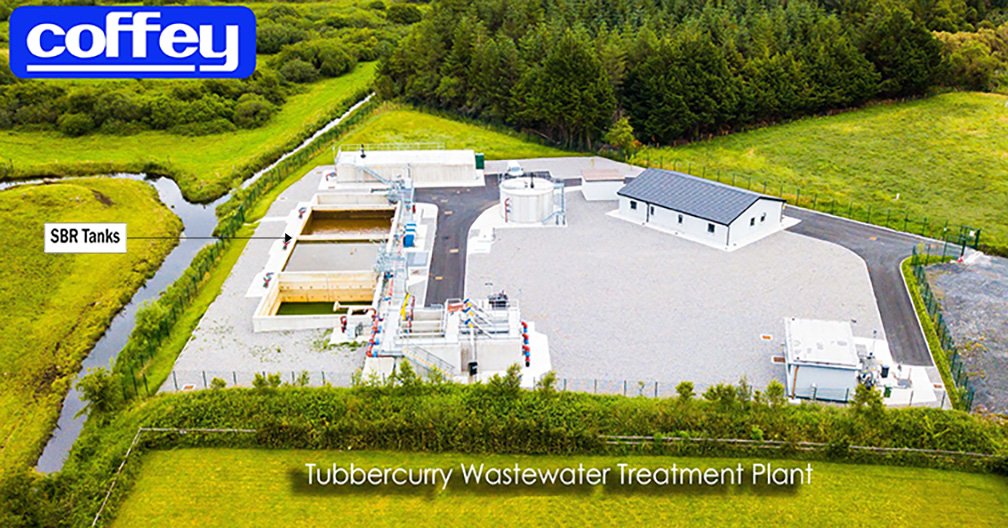
Blog
Wastewater Treatment Technologies – Sequencing Batch Reactor (SBR)
Discover the World of Wastewater Treatment
There are many ways to clean up wastewater spanning physicochemical, biological and advanced oxidation processes. We’re going to discuss a number of the options available over the coming weeks starting with a overview of the Sequencing Batch Reactor (SBR) process.
Wastewater Treatment Technologies – Sequencing Batch Reactor (SBR)
By Aoife Phillips & Maricel Pastor-Soltes – Coffey
Understanding the SBR Process
The Sequencing Batch Reactor (SBR) is a modern wastewater treatment system renowned for its efficiency and adaptability. Unlike conventional systems that continuously flow wastewater through a series of tanks, SBRs operate in a fill-and-draw cycle, treating wastewater within a single reactor. This innovative approach offers several advantages, including:
- Enhanced efficiency: SBRs effectively remove pollutants such as organic matter, nitrogen, and phosphorus.
- Versatility: They can accommodate a wide range of wastewater flows and strengths.
- Compact design: SBRs require less land than traditional treatment plants.

Tubbercurry Wastewater Treatment Plant utilises the SBR process to treat wastewater arriving at the plant
Stages in the SBR Process
The Wastewater Treatment Technologies – Sequencing Batch Reactor (SBR) operation is normally divided into fill, react, settle, decant, and idle cycle (See Figure 1 below).
Fill cycle: Settled biosolids from the previous cycle remain inside the SBR tank occupying about 25% of the tank volume. Influent wastewater is fed into the tank under different conditions depending on the treatment objective. A static fill involves no mixing or aeration, a mixed fill involves mixing with no aeration, and an aerated fill involves both mixing and aeration.
React cycle: When the tank is 100% full, the react cycle begins. This involves aeration of the tank contents for a predetermined period to achieve the necessary effluent quality. Aeration provides further stabilization of BOD5 or COD and nitrification of ammonia nitrogen.
Settle cycle: Aeration and mixing are completely stopped during this stage to provide calm conditions that allow settling of the biosolids to the bottom of the tank, leaving a clarified supernatant layer above the solid–liquid interface.
Decant/draw cycle: The clarified effluent is withdrawn from the top of the tank without disturbing the settled sludge at the bottom of the tank.
Idle cycle: This stage refers to the time between removing clarified effluent and filling the reactor. The length of this stage can vary, and it can be utilised to perform sludge wasting. Sludge wasting is an important parameter in the system performance which can also occur during the settle cycle.
The performance of the SBR can be optimised by using two or more batch reactors that operate in a sequence. When one tank is filling the other tank(s) will be carrying out their operational stages which can result in a reduced fill time.
The process has proven its capability in the enhanced nutrients removal and high resistance to the fluctuating influent parameters. The system uses the same reactor for the solids separation, thus, negating the need for a separate clarification system and reducing the footprint of the plant.
Advantages of Sequencing Batch Reactor (SBR):
• Ability to treat a wide range of organic and hydraulic loading rates
• Enhanced nutrients removal
• High resistance to the fluctuating influent parameters
• No requirement for an additional clarifier
• Land requirements are smaller than continuous flow treatment
• Produces high quality effluent
• Flexible control and operation
• Reliable and cost-effective solution
• No return activated sludge in the SBR
At Coftec, we provide wide range of wastewater treatment solutions. We can provide you with an SBR system that is practically suitable to your treatment requirements. Our multi-disciplinary team of engineers and experts offer a proven track record of leveraging their expertise and experience in providing the most practical solutions to treat your wastewater.
Contact Coftec whether designing a new facility or refurbishing, expanding, or bringing an existing facility up to regulatory standards to discuss how we can help in your project.
To know more, contact us at info@coftec.ie, tel: +353 (0)91 844356 or via a website inquiry.




